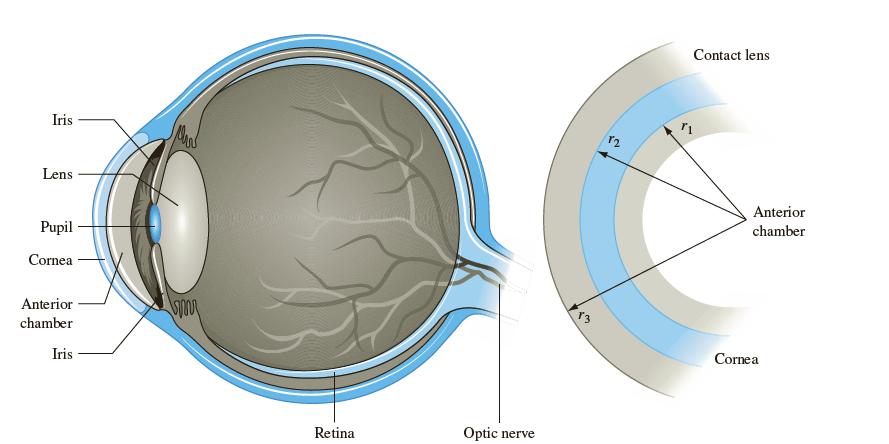The development of contact lenses has transformed the solutions that are available today for vision impairments. However,
Question:
The development of contact lenses has transformed the solutions that are available today for vision impairments. However, wearing them also poses several problems that includes the condition of dry eyes due to lack of cooling, oxygenation, and moisturizing or lubrication of the cornea, among others. In the developmental phase of a new protective liquid for contact lenses, the optometrist would like to know the rate of heat loss from the anterior chamber of the eye through the cornea and the contact lens. This system is modeled as a partial hollow sphere, as shown in the schematic diagram on the next page. The inner and outer radius of the cornea are, respectively, r1 = 10 mm and r2 = 12.5 mm, and the outer radius of the fitted contact lens is r3 = 14.5 mm. The anterior chamber, which contains the aqueous humor that provides nutrients to the cornea (as the latter tissue has no blood vessels), exposes the inner surface of the cornea to a temperature

of Ti = 36.9°C with a convective heat transfer coefficient of h̅i = 10 W/m2• K. The thermal conductivity of the transparent tissue of the cornea is 0.35 W/m • K, and that of the contact lens material is 0.8 W/m • K. The outer surface of the contact lens is exposed to room air at To = 22°C and has a convection coefficient of h̅o = 5 W/m2 • K. Draw a thermal circuit for the system showing all of the temperature potentials and thermal resistances. Then estimate the rate of heat loss from the anterior eye assuming that steady state exists and the eye aperture spherical angle is 100º.
Step by Step Answer:

Principles Of Heat Transfer
ISBN: 9781305387102
8th Edition
Authors: Frank Kreith, Raj M. Manglik, Mark S. Bohn





